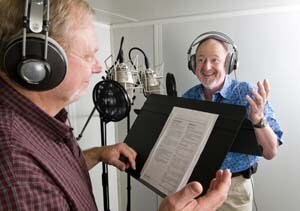Recent Episodes

Certain times of the year, we hear about Saharan dust reaching the US from Africa, carried by high atmospheric winds. And now a new study tells us something more worrying can be carried great distances by the wind: disease causing microbes.
Researchers found microbes originating from an agricultural area in northeastern China traveled over 1,200 miles to Tokyo, Japan. The air samples were taken up to 2 miles above Tokyo over 10 plane flights. The microbes hitched a ride on unique dust particles that were traceable. They came from cereal fields that contained aerosolized sewage. Not only did the dust particles carry bacteria and fungi, but they also protected the microbes from UV radiation and drying out in the atmosphere.
More than 300 types of bacteria and 250 types of fungi were found in the air over Tokyo. And up to 40 percent were species capable of causing disease in people such as the intestinal pathogens Clostridium difficile and E. coli. Some bacteria carried antibiotic-resistant genes which means they could be transferred to other bacteria. There weren’t enough microbes to cause an outbreak, but the atmosphere could be a reservoir for these pathogens that can fall to the ground with rain.
We used to believe that altitude air was generally considered sterile. Not anymore and since bacteria and fungi do not require a passport, we can’t keep them out.
More Information
Pathogenic microbes blown vast distances by winds, scientists discover
Living microbes that cause disease in humans and host antibiotic-resistance genes carried 1,200 miles
Microbial richness and air chemistry in aerosols above the PBL confirm 2,000-km long-distance transport of potential human pathogens
The existence of viable human pathogens in bioaerosols which can cause infection or affect human health has been the subject of little research. In this study, data provided by 10 tropospheric aircraft surveys over Japan in 2014 confirm the existence of a vast diversity of microbial species up to 3,000 m height, which can be dispersed above the planetary boundary layer over distances of up to 2,000 km, thanks to strong winds from an area covered with massive cereal croplands in Northeast (NE) Asia.

Medicine...
Medicine is constantly advancing – that is a great thing about life in the 21st century. But it doesn’t just happen. Dedicated biomedical scientists are making discoveries that translate into those new medical advances.
Biomedical science is broad, encompassing everything from social science to microbiology, biochemistry, epidemiology, to structural biology and bioinformatics to name just a few areas. And, it can involve basic fundamental biology, the use of AI and chemistry to clinical studies that evaluate new medicines in patients.
No matter the research focus, the goal is always the same, to advance human health. It may take a few months, a few years or for fundamental science, a few decades. Few people make the connection that biomedical science is medicine and that biomedical scientists are working today on the medicine of tomorrow. Our weekly 500-word newspaper columns and 2-minute radio shows and podcasts provide insights into a broad range of biomedical science topics.
Medical Discovery News is dedicated to explaining discoveries in biomedical research and their promise for the future of medicine.





